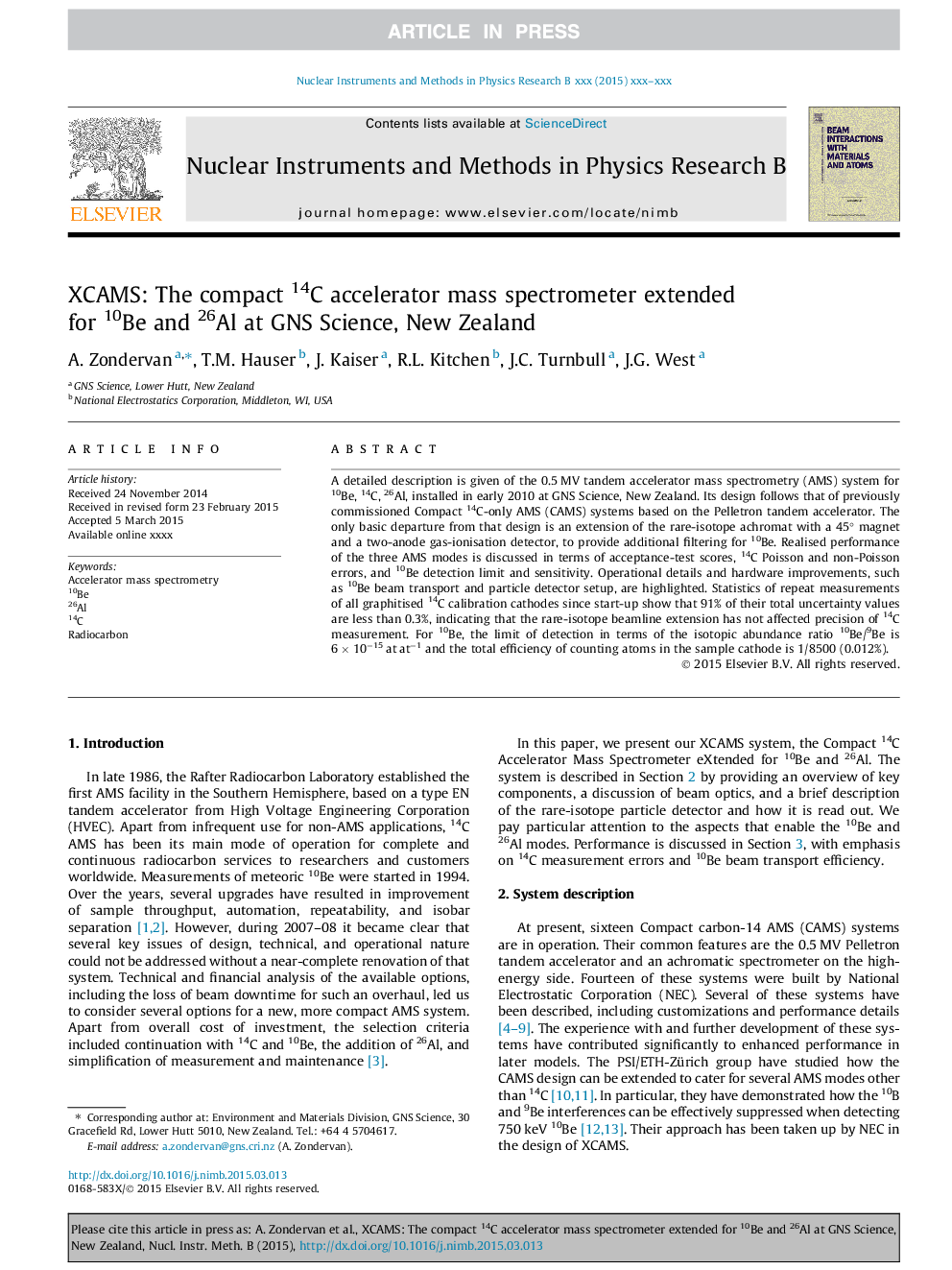| Article ID | Journal | Published Year | Pages | File Type |
|---|---|---|---|---|
| 8040175 | Nuclear Instruments and Methods in Physics Research Section B: Beam Interactions with Materials and Atoms | 2015 | 9 Pages |
Abstract
A detailed description is given of the 0.5 MV tandem accelerator mass spectrometry (AMS) system for 10Be, 14C, 26Al, installed in early 2010 at GNS Science, New Zealand. Its design follows that of previously commissioned Compact 14C-only AMS (CAMS) systems based on the Pelletron tandem accelerator. The only basic departure from that design is an extension of the rare-isotope achromat with a 45° magnet and a two-anode gas-ionisation detector, to provide additional filtering for 10Be. Realised performance of the three AMS modes is discussed in terms of acceptance-test scores, 14C Poisson and non-Poisson errors, and 10Be detection limit and sensitivity. Operational details and hardware improvements, such as 10Be beam transport and particle detector setup, are highlighted. Statistics of repeat measurements of all graphitised 14C calibration cathodes since start-up show that 91% of their total uncertainty values are less than 0.3%, indicating that the rare-isotope beamline extension has not affected precision of 14C measurement. For 10Be, the limit of detection in terms of the isotopic abundance ratio 10Be/9Be is 6 Ã 10â15 at atâ1 and the total efficiency of counting atoms in the sample cathode is 1/8500 (0.012%).
Related Topics
Physical Sciences and Engineering
Materials Science
Surfaces, Coatings and Films
Authors
A. Zondervan, T.M. Hauser, J. Kaiser, R.L. Kitchen, J.C. Turnbull, J.G. West,
